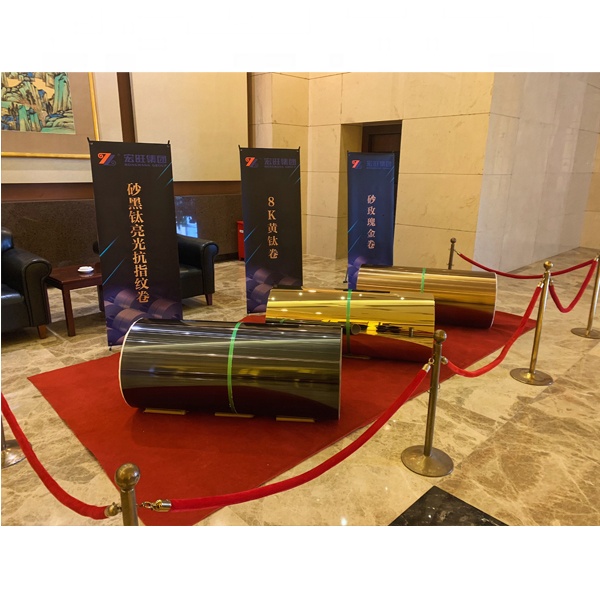
In 2020, under the influence of special factors such as the epidemic, China’s crude steel production exceeded the 1 billion ton mark for the first time, and its share of world steel production rose to 57%. While this unconventional high-speed growth has allowed the profits of steel companies to rise, it has also triggered some cold thinking in the industry.
On the 20th, the “2021 (12th) China Iron and Steel Development Forum” was held in Beijing. Many industry experts said here that it is necessary to be soberly aware that the rapid growth of China’s steel industry last year was “abnormal”, and the development of the steel industry still faces three major challenges such as volume reduction, low carbon, and safety.
Steel is one of the metal materials with the widest application range and the highest recycling rate in the world. The steel industry often represents the comprehensive strength of a country or economy. Yu Yong, chairman of the World Iron and Steel Association and chairman of HBIS Group Co., Ltd., said on the same day that since 1996 when steel production exceeded 100 million tons, China has maintained the world’s first steel output for 25 consecutive years. Especially in the past 10 years, China’s steel output has consistently maintained more than half of the world’s steel output.
Official data show that in 2020, China’s crude steel and steel output will reach 1.065 billion tons and 1.325 billion tons, an increase of 7.0% and 10.0% respectively year-on-year. In the same period, according to the China Iron and Steel Association, the apparent consumption of domestic crude steel reached a record high, a year-on-year increase of 9%; the performance of steel enterprises improved, and the key statistical steel companies realized a profit of 207.4 billion yuan, an increase of 6.59% year-on-year.
Luo Tiejun, vice chairman of the China Iron and Steel Association, said frankly that the improvement in the performance of the steel industry in recent years is mainly due to supply-side structural reforms and a series of national macro policies to respond to the epidemic. But we need to be soberly aware that this rapid growth last year was “abnormal”.
Li Xinchuang, Secretary of the Party Committee and Chief Engineer of the Metallurgical Industry Planning and Research Institute, also reminded that the current high growth in steel consumption should be treated calmly. It may make it more difficult to achieve carbon emission reduction targets, a new round of supply and demand imbalances, and overheated investment in the steel industry. And the difficulty of resource protection has increased.
At the beginning of this year, Huang Libin, director of the Operation Monitoring and Coordination Bureau of the Ministry of Industry and Information Technology, said that it is necessary to resolutely reduce steel production and will study and formulate relevant work plans to ensure that steel production will be fully reduced in 2021.
Luo Tiejun pointed out that research has found that the current production capacity of China’s steel can fully meet future demand, which has reached a consensus in the industry. In the future, the iron and steel industry will focus on increasing investment in product quality, low-carbon, green and intelligent aspects to achieve transformation and upgrading.
Closely related to volume reduction development is low-carbon development. China has previously proposed that it strives to reach its peak carbon dioxide emissions by 2030 and achieve carbon neutrality by 2060. The steel industry is a key carbon emission industry that all countries in the world are paying attention to. Li Xinchuang pointed out that from a global perspective, the steel industry directly emits 2.6 billion tons of carbon dioxide each year, accounting for 7% of the total emissions from the global energy system, exceeding the emissions of all road freight.
As a country with the highest steel production in the world, China’s pressure is self-evident. Hu Wenrui, director of the Department of Engineering Management of the Chinese Academy of Engineering and academician of the Chinese Academy of Engineering, pointed out that the steel industry is the industry with the largest carbon emissions among the 31 sectors of the manufacturing industry, accounting for about 15% of the total emissions.
Experts believe that, in order to achieve the peak of carbon in all industries, the steel industry must “get ahead.”
In addition to low-carbon and volume reduction development, many experts reminded that China’s steel industry is too dependent on foreign materials for raw materials, and measures must be taken to ensure the safety of the industry’s development.
Hu Wenrui pointed out that in 2020, China’s iron ore imports hit a record high, and iron ore prices hit an 8-year high. The sharp rise in iron ore prices once again highlights the fragility and instability of China’s steel industry industrial chain, especially the raw material supply chain, and severely restricts the stable and safe development of the steel industry.
Luo Tiejun said that the establishment of a reasonable iron ore pricing mechanism should be promoted through marketization and rule of law, so that the framework conforms to the laws of the market. At the same time, we should concentrate our efforts to accelerate the development of domestic and foreign iron ore resources, and increase the output of domestic ore as an important means to make up for shortcomings; in addition, we must pay full attention to the recycling and utilization of scrap steel resources.
Media Contact
Company Name: Foshan Hermdeco Steel Co., Ltd
Email: Send Email
Phone: +86-757-29273045
Country: China
Website: https://www.hermessteel.net/
